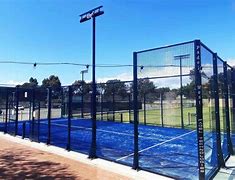

Building a Squash Court A Comprehensive Guide
Building a squash court can be an exhilarating yet challenging project for sports enthusiasts and facility managers alike. Squash is a fast-paced racquet sport that requires a dedicated space for play. Whether you’re constructing a court for a local club, a school, or your home, understanding the requirements and process is essential for success. In this article, we’ll explore the key considerations in building a squash court, ensuring you create an optimal playing environment.
Understanding the Dimensions
The first step in building a squash court is to familiarize yourself with the official dimensions. A standard squash court measures 9.75 meters (32 feet) in width, 6.4 meters (21 feet) in height, and 4.57 meters (15 feet) in depth. The overall playing area is 9.75 meters long and 6.4 meters wide. The front wall is crucial, as it is where most of the ball play occurs. It should be made of a smooth surface that blends the right materials to allow for the best ball rebound.
Additionally, courts should have a safety buffer zone. Ideally, you should allow at least 2 meters (6.5 feet) of free space around the sides and back of the court. This area helps prevent collisions and allows players to move freely.
Selection of Materials
The materials you choose can significantly affect the durability and playing conditions of your squash court. The playing surface is often made from high-quality hardwood, such as maple or oak, which can withstand the impact of play and provide an excellent grip. Other common flooring materials include PVC or specialized squash court flooring designed to absorb impact and prevent slipping.
The walls should be constructed from concrete or other solid materials to minimize vibration and provide a consistent bounce. It’s essential to consider the wall surfaces' finishes, as they should be smooth to ensure the ball rebounds predictably. The use of glass panels in the back wall is becoming increasingly popular for spectator viewing while maintaining a traditional playing experience.
Climate Control
Climate control is another crucial aspect to address when building a squash court. Temperature and humidity levels can affect gameplay, so it’s essential to maintain a suitable environment. Installing an effective HVAC (Heating, Ventilation, and Air Conditioning) system will help regulate these factors, making the court comfortable year-round. Proper insulation in the construction phase will also enhance energy efficiency and maintain a consistent temperature.

Lighting and Acoustics
Lighting is essential for any sports facility, and a squash court is no exception. Adequate lighting ensures players can see the ball effectively, which is critical given the speed of play. The lighting should be evenly distributed, with at least 300 lux on the playing surface, using fixtures that minimize glare and shadows. High-intensity LED lights are a popular choice due to their energy efficiency and long lifespan.
Acoustic considerations should not be overlooked either. Squash can produce significant noise from ball impacts and player movements, so installing acoustic panels can help absorb sound. This is particularly important in multi-use facilities where noise control is necessary for other activities.
Compliance with Regulations
Before initiating construction, it’s crucial to adhere to local building codes and regulations. Different regions may have specific requirements regarding the structure's safety, electrical installations, and plumbing systems. Additionally, if you plan to register your court with a squash federation or association, ensure compliance with their standards for dimensions, materials, and safety features.
Budgeting and Timeline
Budgeting is an essential aspect of planning your squash court construction. Costs can vary widely based on location, materials, and design features. It’s essential to create a detailed budget that accounts for construction costs, equipment, and maintenance.
Time is another critical factor; plan accordingly to ensure your project runs smoothly. Construction of a squash court can take several months, depending on various factors like design complexity and weather conditions.
Conclusion
Building a squash court is a detailed process that requires careful planning and consideration of multiple factors. From understanding the dimensions to selecting materials and ensuring compliance with local regulations, each step is essential in creating an optimal playing environment. Whether you are a passionate player or a facility manager looking to expand your offerings, a well-built squash court will provide enjoyment and challenge for years to come. Taking the time to invest in your court will pay off in the long run, making it a valuable asset for the community and a hub for squash enthusiasts.
High-Performance Industrial Flooring Solutions China Paddle Tennis Court for Sale
High-Performance Industrial Flooring Solutions Durable & Cost-Effective
Homogeneous Transparent Floor – Durable & Stylish Rubber Floor Solutions
Premium Homogeneous Transparent Floor for Durable & Stylish Spaces Rubber Floor Solutions
Premium Sports Floor Solutions Durable PVC Sports Floor & Rubber Floor for Gyms
Durable Rubber Composite Floor Premium Rubber Floor & Mats Solutions